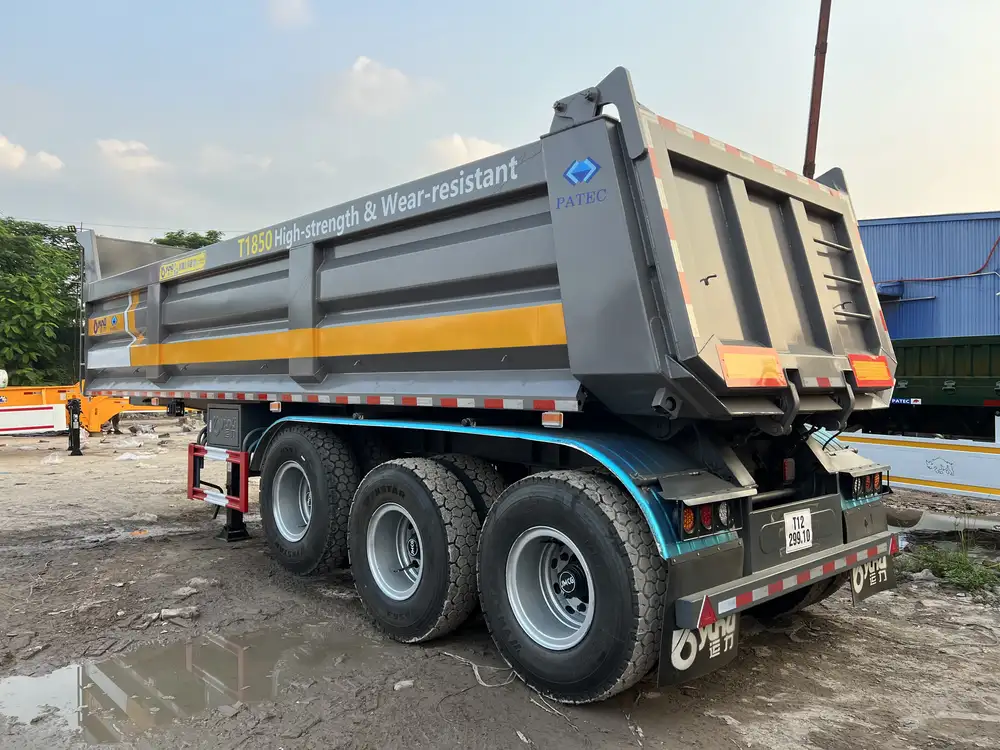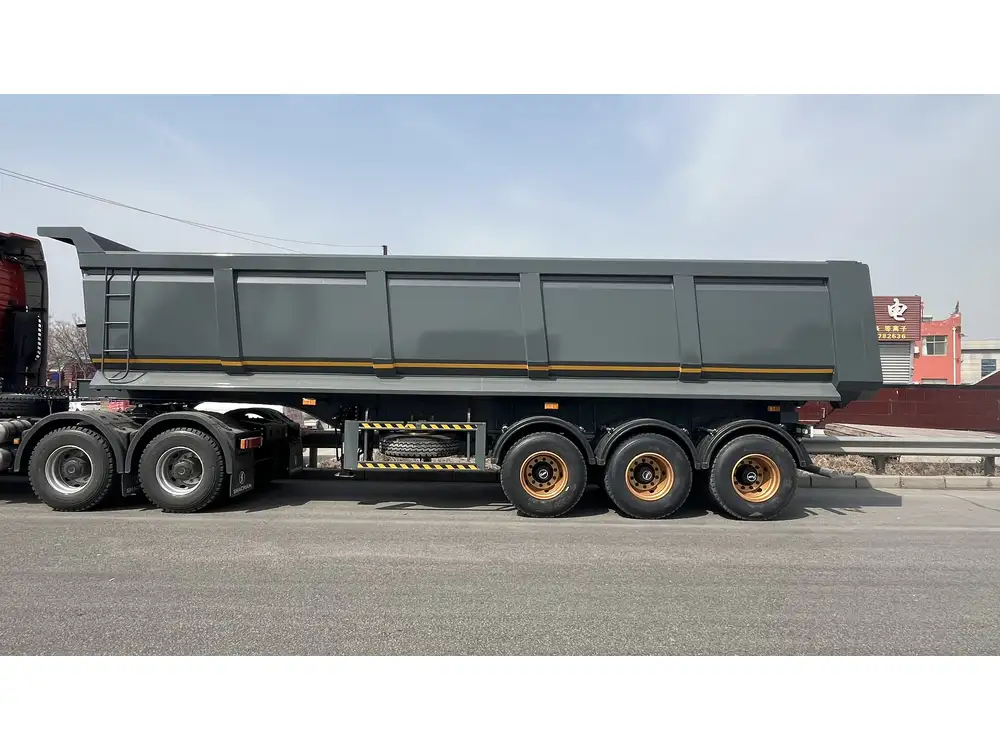Navigating the world of towing, especially with a small dump trailer, involves understanding regulations, safety protocols, and best practices to ensure a seamless journey. In this detailed guide, we’ll explore everything you need to know about taking a small dump trailer on the road, addressing your critical concerns and providing you with the information necessary to make informed decisions.
Understanding Small Dump Trailers
What is a Small Dump Trailer?
A small dump trailer is a highly versatile, portable container designed for quick loading, unloading, and transport of loose materials such as dirt, sand, gravel, or debris. These trailers are typically compact, making them suitable for residential projects, landscaping businesses, and DIY enthusiasts who require a convenient and efficient way to move materials.

Key Features of Small Dump Trailers
- Payload Capacity: Ranges from 1,500 to 5,000 pounds, depending on the manufacturer and model.
- Size: Usually designed to fit smaller vehicles, with lengths between 5 to 10 feet.
- Construction Material: Commonly made from steel or aluminum, ensuring durability and resistance to heavy loads.
- Tipping Mechanism: Includes hydraulic systems that allow for effortless unloading with the press of a button.
Legal Considerations for Road Use
Licensing and Registration Requirements
Before you hit the road, it’s critical to understand the legal requirements associated with towing a small dump trailer:
- Registration: Most states require you to register your dump trailer separately. Ensure you have the appropriate documentation.
- License Plate: A valid license plate must be affixed to the trailer, often following the same regulations as standard vehicle license plates.
- Towing Vehicle: Verify that your vehicle is rated for the trailer’s weight. Check the manufacturer’s specifications for the Gross Vehicle Weight Rating (GVWR).

Local Laws and Regulations
Road laws vary widely by state and municipality. Always check specific laws in your area regarding:
- Towing Speed Limits: Some areas impose reduced speed limits for trailers.
- Trailer Lighting Requirements: Ensure your trailer has the necessary brake lights, turn signals, and reflectors.
- Width Restrictions: Most states enforce width limitations. Small dump trailers designed for road use typically comply with these standards, which are generally around 8.5 feet.
| Regulation Type | States/Localities | Description |
|---|---|---|
| Registration | Varies by state | Must register the trailer; check local requirements. |
| Towing Speed Limits | Varies by area | Reduced speed limits for trailers, often 55 mph. |
| Weight Restrictions | Most states | Must adhere to specific weight and height limits. |
| Brake Light Requirements | All states | Trailers must have proper signals and lighting. |
Safety Protocols for Towing
Preparing for Your Journey
Before embarking on your trip with a small dump trailer, follow these essential safety checks:
- Inspect the Trailer: Check for any signs of wear and tear, including tires, lights, and the hitch.
- Secure the Load: Ensure that your load is evenly distributed and secured with tarps or straps to prevent shifting during transit.
- Inspect the Hitch: Confirm that the hitch is compatible with your towing vehicle and is securely locked in place.

Driving Tips for Towing a Trailer
Towing a small dump trailer requires different driving techniques to ensure safety:
- Turning Radius: Remember that your trailer will follow a different path than your towing vehicle. Allow for extra space while turning.
- Braking Distance: Increase your following distance, as stopping will take longer with the added weight.
- Lane Positioning: Maintain your lane with extra caution, as trailer swaying can occur, particularly in windy conditions.
Common Challenges Faced While Towing
Trailer Sway
Issue: Trailer sway, or fishtailing, can pose a significant risk while on the road. It occurs when the trailer begins to move uncontrollably side to side.
Solution:
- Distribute the load evenly.
- Invest in a weight distribution hitch.
- Slow down your speed to regain control.

Overheating Brakes
Issue: Towing heavy loads can lead to increased brake temperatures, resulting in brake fade.
Solution:
- Regularly check brake fluid levels.
- Avoid excessive braking by downshifting and using engine braking whenever possible.
- Consider installing trailer brakes for better control.
Fishbowl Effect of Mirrors
Issue: Towing a trailer can create blind spots that hinder visibility.
Solution:
- Use extended towing mirrors for better visibility.
- Always perform a thorough mirror check before changing lanes.
Practical Applications of Small Dump Trailers

Residential Use
Small dump trailers are invaluable for residential projects, providing quick loading and unloading capabilities for tasks such as:
- Home Renovations: Easily transport debris, soil, and building materials.
- Landscaping: Move large quantities of mulch, rocks, or sod efficiently.
Commercial Use
Many small businesses benefit from the versatility of dump trailers:
- Construction Sites: Ideal for transporting concrete, gravel, and other heavy materials.
- Landscaping Companies: Essential for transporting bulk materials to job sites.
Maintenance Tips for Small Dump Trailers

Routine Maintenance Checklist
To ensure the longevity and safety of your small dump trailer, adhere to the maintenance guidelines below:
- Regular Inspections: Check for rust, cracks, and loose bolts.
- Tire Maintenance: Maintain proper tire pressure and tread depth, and rotate tires as necessary.
- Hydraulic System Check: Inspect hydraulic operation for any leaks or malfunctions.
Seasonal Considerations
- Winter Precautions: Prepare your trailer for snow and ice by applying rust protection, removing excess snow, and checking for winter-related wear.
- Summer Checks: Ensure that the tires are not worn down from heat exposure and that all electrical systems are functioning.
Frequently Asked Questions

Can I Take a Smaller Dump Trailer on Highways?
Yes, you can typically take a small dump trailer on highways as long as it complies with local regulations regarding registration, license plates, and safety features. Ensure that your vehicle is equipped to handle the trailer’s weight, especially on inclines or heavy traffic.
What Load Should I Avoid Exceeding?
Most small dump trailers are designed for payloads between 1,500 and 5,000 pounds. Always check your specific trailer’s weight capacity to ensure you do not exceed the Gross Vehicle Weight Rating (GVWR).
| Trailer Model | Max Payload Capacity | Recommended Towing Vehicle |
|---|---|---|
| Model A | 2,000 lbs | Standard SUV |
| Model B | 3,500 lbs | Full-sized Pickup Truck |
| Model C | 4,500 lbs | Heavy-Duty Pickup Truck |
What Size Vehicle Do I Need to Tow a Small Dump Trailer?
The size of the vehicle required to tow a small dump trailer often depends on the trailer’s weight and the tow rating of the vehicle. Generally, a standard SUV or a full-sized pickup truck is sufficient for most small dump trailers.

How Do I Load My Small Dump Trailer Properly?
- Even Distribution: Place heavier items toward the front to help stabilize the trailer.
- Secure the Load: Use ropes, tarps, or netting to prevent movement during transit.
- Avoid Overloading: Ensure you do not exceed the trailer’s weight limit for safety and legal compliance.
Conclusion
Driving with a small dump trailer does not have to be daunting. By understanding the specific legal requirements, safety protocols, challenges, and practical usage, you can ensure a secure and efficient towing experience. Whether for personal use in your backyard or for professional projects, adhering to these guidelines will maximize safety and efficacy while you transport materials.
Make informed decisions, follow state regulations, and prioritize safety to ensure that your experience is both successful and without unnecessary stress. Equip yourself with the knowledge necessary for safe towing, and let your small dump trailer serve you well on the road.



